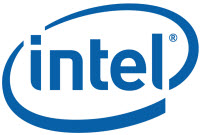 It looks like Intel‘s bid to become a major player in consumer graphics chips has ended in disaster — for now.
It looks like Intel‘s bid to become a major player in consumer graphics chips has ended in disaster — for now.
The world’s biggest chip maker has been working for years on Larrabee, a chip with dozens of cores for processing graphics. It was the company’s major competitive thrust at Nvidia and the graphics division of Advanced Micro Devices. But the company has canceled the consumer version of Larrabee, as first reported in the SemiAccurate blog.
“Larrabee silicon and software development are behind where we had hoped to be at this point in the project,” said Nick Knupffer, a spokesman for Intel in Santa Clara, Calif. “Larrabee will not be a consumer product.”
In other words, it’s not entirely dead. It’s mostly dead. Instead of launching the chip in the consumer market, Intel will make it available as a software development platform for both internal and external developers. Those developers can use it to develop software that can run in high-performance computers.
But Knupffer said that Intel will continue to work on stand-alone graphics chip designs. He said the company would have more to say about that in 2010.
The setback will allow Nvidia and AMD to breathe sighs of relief. Intel was offering a very different architecture that would have competed with the stand-alone graphics chips that those companies make. In one manner of measurement, Intel said the performance of the initial Larrabee design for “throughput computing” applications used in supercomputers is “extremely promising.” The design drew praise and interest at the Game Developers Conference this year. Evidently, however, the consumer graphics performance was weak.
Intel will still continue to make graphics components that are integrated into PC support chips known as chip sets. But those are typically not good enough to run high-end 3-D games and high-resolution videos.


